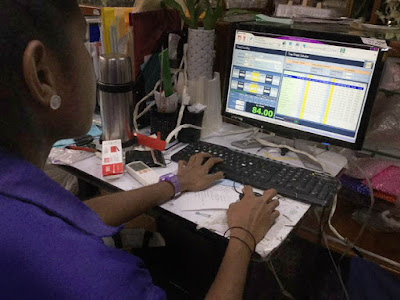From the word "Cinch" which means, easy; and from the word "Productivity," the CinchPro payroll came out with an aim to ease out the tediousness and the painstaking workflow of working on payroll reports that HR does every fortnight to meet the payroll deadlines. Designed to be a straightforward and to be a very user-friendly program, CinchPro is the robust solution to challenging payroll procedures.
Absences Reporting. Easy viewing of absences incurred by employees with display of used up Medical Certificates, off days and actual time per fornight from attendance software.
Biometric Connection Module. Easily download attendance logs from Fingerprint Biometric stand-alone readers and upload to Cinchpro's Timesheet module.
Supported Fingerprint Biometric Reader. Cinchpro supports the use of TX628 stand-alone fingerprint reader.
Supported Fingerprint Biometric Reader. It also supports the use of T480 stand-alone fingerprint reader.
Help/Manual. CinchPro program comes with a help file that has an easy to follow instructions, making it easy for the user to operate the system.
Our company is using CinchPro Payroll version 3.0 for more than a year now and a biometric attendance system bundled with it for over four years now. We have two business locations where this program is installed and serve more than 250 employees and by far things are going well and easy for us.
Here are some of the examples of what this payroll program can do:
Main Menu. Sleek ribbon menu and big icons and a dashboard display that keeps track of the current workflows.
Employee Masterfile. Easy look-up of employees. With picture and a history of pay rates. It also shows the OFF day schedule.
Absences Reporting. Easy viewing of absences incurred by employees with display of used up Medical Certificates, off days and actual time per fornight from attendance software.
Item Booking Module. CinchPro payroll comes with a module for distributing bread booking if the shop using this program are also selling bread or any items that staffs can sometimes book for salary deduction later.
Item Booking Module in actual operation (with pos printer).
Sewer Jobs. This payroll comes with a module for paying staff that are paid not by the hours but by the pieces they make. This is perfect if the shop that is using this payroll has a factory that produces school uniforms or the likes where some employees in the factory are paid by the number of uniforms they make.
Biometric Connection Module. Easily download attendance logs from Fingerprint Biometric stand-alone readers and upload to Cinchpro's Timesheet module.
Supported Fingerprint Biometric Reader. Cinchpro supports the use of TX628 stand-alone fingerprint reader.
Supported Fingerprint Biometric Reader. It also supports the use of T480 stand-alone fingerprint reader.
Loans. CinchPro payroll comes with a module for handling loans by employees to the company. It's automatic deduction/pay features makes it easy for the company to take back payments through salary deductions.
Leave Pay Reports. CinchPro payroll can produce many reports and it can also generate reports for Leave Pay Candidates at one's whim.
Leave Planner. CinchPro payroll comes with an Annual Leave Planner that makes it easy for the HR to create and approve leave requests. It has an easy to read graph and month views that highlights the days of leave.
Help/Manual. CinchPro program comes with a help file that has an easy to follow instructions, making it easy for the user to operate the system.
Demo Link Below:
Note: Once you download the demo file, send me an email (My Email) so I can send you the password for the zip file and let me assist you with the installation.
Requirements:
1. Windows 7 or later version
2. 180 MB of free disk space.
Third Party Software Requirements:
1. We will need to install SQL Server Express to your server or to your pc.






















































